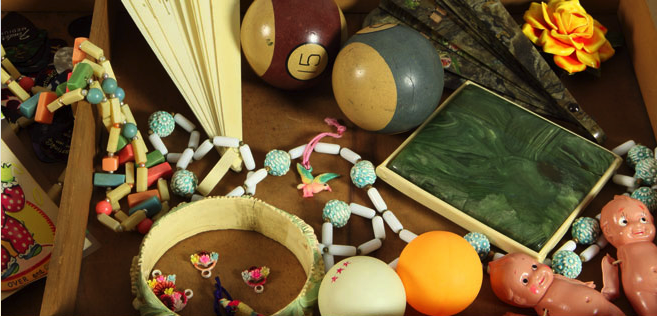Results 31 to 37 of 37
-
06-04-2015, 02:53 AM #31Member

- Join Date
- May 2015
- Location
- Chelsea, Michigan
- Posts
- 39
Thanked: 3
But that is exactly what my, the OP, question was about...celluloid scales. It seemed to me that the warning from The Superior Shave (TSS) was almost a deterrent to people from purchasing straight razors with celluloid scales. Seeking further clarification I asked him -
"Thank you for the clarification. I admit that my concern was raised because it almost seemed like the razor description was meant to deter people from purchasing the King Cutter because the celluloid scales would break. Again, thank you for the clarification."
To which TSS replied -
"king cutter doesn't use bad celluloid, but in the grander scheme of things all celluloid is far too flexible and brittle alike micarta, on the other hand, is extremely durable stuff (it is more or less identical to the fuselage underlining of WWII bombers)"
Seeking further clarification, I asked Boker USA -
"I am interested in purchasing the Boker straight razor #140521 (King Cutter). I have read that the scales are made of celluloid (a historic and early plastic material). I have also read that celluloid can be unstable and can deteriorate more quickly than other polymer materials. Please tell me what the scales of the Boker straight razor #140521 (King Cutter) are made of and if the material is durable and stable long-term."
To which Boker USA replied -
"Thank you for your inquiry! This has a plastic handle, which is extremely durable, water resistant, etc. We have been using this material for many, many, many years. Let me know if you have any additional questions. Thanks!"
So, Boker USA indicated that the scales of the King Cutter are indeed plastic - extremely durable and water resistant at that. So, I am perplexed why TSS felt the need to issue the warning about the scales when Boker stated that the scales are extremely durable and water resistant. I can understand caution but the extreme nature of the warning? It seemed a little over the top.
Regardless, even before I received Boker's response, I decided to take a chance on the Boker King Cutter because I like TSS and I came to the conclusion that if the scales were garbage, the blade would be good, and I could always have the scales replaced. I have no doubt that it is a fine razor and I am looking forward to receiving it and the Ralf Aust, with bridle leather strop, I purchased from Straight Razor Designs.
In short, all of my questions have been satisfactorily answered.
-
The Following 2 Users Say Thank You to rosborn For This Useful Post:
Neil Miller (06-04-2015), sharptonn (06-04-2015)
-
06-04-2015, 08:32 AM #32

Funny, I just Googled it the other day & this is what it says:
a transparent flammable plastic made in sheets from camphor and nitrocellulose, formerly used for cinematographic film.
celluloid, the first synthetic plastic material, developed in the 1860s and 1870s from a homogeneous colloidal dispersion of nitrocellulose and camphor.
-
06-04-2015, 11:35 AM #33Senior Member



- Join Date
- Apr 2008
- Location
- Essex, UK
- Posts
- 3,816
Thanked: 3164
Hope I am not putting Crowncork's nose out of joint with more about celluloid, but here goes...!
The potted history above is not entirely correct. The concept of celluloid was first muted in 1848. The first marketable formula was celluloid, available in 1855, but because it's British inventor was called Alexander Parkes it was marketed under the name 'Parkesine", and later as 'Xylonite' which found its way into the workrooms of many Sheffield straight razor workshops as a scale material. There is in London a placque recalling the deaths of loads of workers in one company dying when the xylonite store caught fire and exploded. In 1921 there was a fire in a Sheffield cutlery company, again due to xylonite:

I have seen the stuff in inventories for Sheffield cutlery works as late as 1931, though it probably was used up to the 1950s, perhaps longer.
Parkes invention was described as letting collodion evaporate into a solid mass - he also used camphor. It was still called Parkesine in the early 1860s. He and an inventor named Spill called the mixture 'Xylonite' when they added camphor to it.
Parkes went belly-up in the water and American John Hyatt (a blacksmith's son, incidentally) bought his patent in the 1860s. Hyatt formed a billiard ball manufacturing company in the 1870s - the origin of the 'exploding billiard balls' fracas. Hyatt also formed the 'Celluloid Manufacturing Co. and by 1872 the trade name 'celluloid' was firmly entrenched.
Ping-pong balls are still made from celluloid today, in the past they made celluloid cuffs and collars (the sheet material could be cut and then formed into shape with the aid of heat), here are some other objects:

Meanwhile back in england an associate (inventor and rubber manufacturer) of Parkes - Daniel Spill - had started the 'Xylonite Co.' - there was a legal dispute with Hyatt, but as Parkes was the inventor judgement meant that neither Spill nor Hyatt won the case - celluloid and xylonite were still 'owned' as material by Hyatt and Spill.
Hyatt set up a new premises in New Jersey in 1872 to produce celluloid. It did not cease production until 1949.
So - the start date of 1860 - 1870 quoted by many articles is incorrect.
Regards,
NeilLast edited by Neil Miller; 06-04-2015 at 11:37 AM.
-
The Following User Says Thank You to Neil Miller For This Useful Post:
engine46 (06-04-2015)
-
06-04-2015, 02:38 PM #34

Wow! So much info provided by the oracles on here. I was just simply gonna say that if the razor is new and the scales are celluloid, I wouldn't worry about it. With the proper care and correct, relatively gentle use of the razor, it'll outlive you! However, since the scales have been confirmed as plastic, I won't say it!!
Enjoy your King Cutter rosborn.
-
06-04-2015, 02:40 PM #35Member

- Join Date
- May 2015
- Location
- Chelsea, Michigan
- Posts
- 39
Thanked: 3
-
06-04-2015, 06:12 PM #36
-
06-04-2015, 06:19 PM #37


 81Likes
81Likes LinkBack URL
LinkBack URL About LinkBacks
About LinkBacks







 Reply With Quote
Reply With Quote

